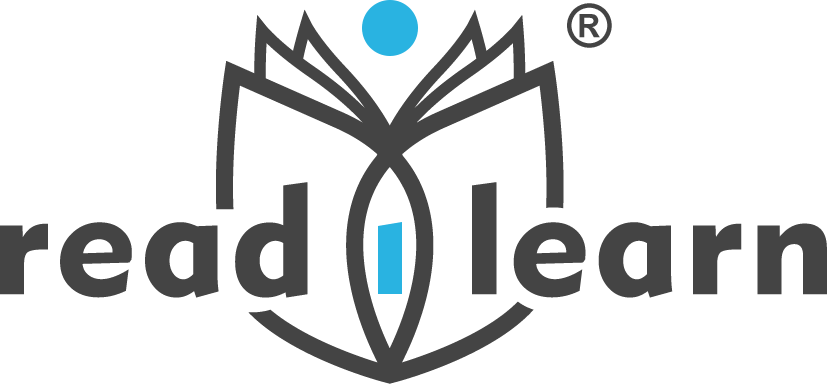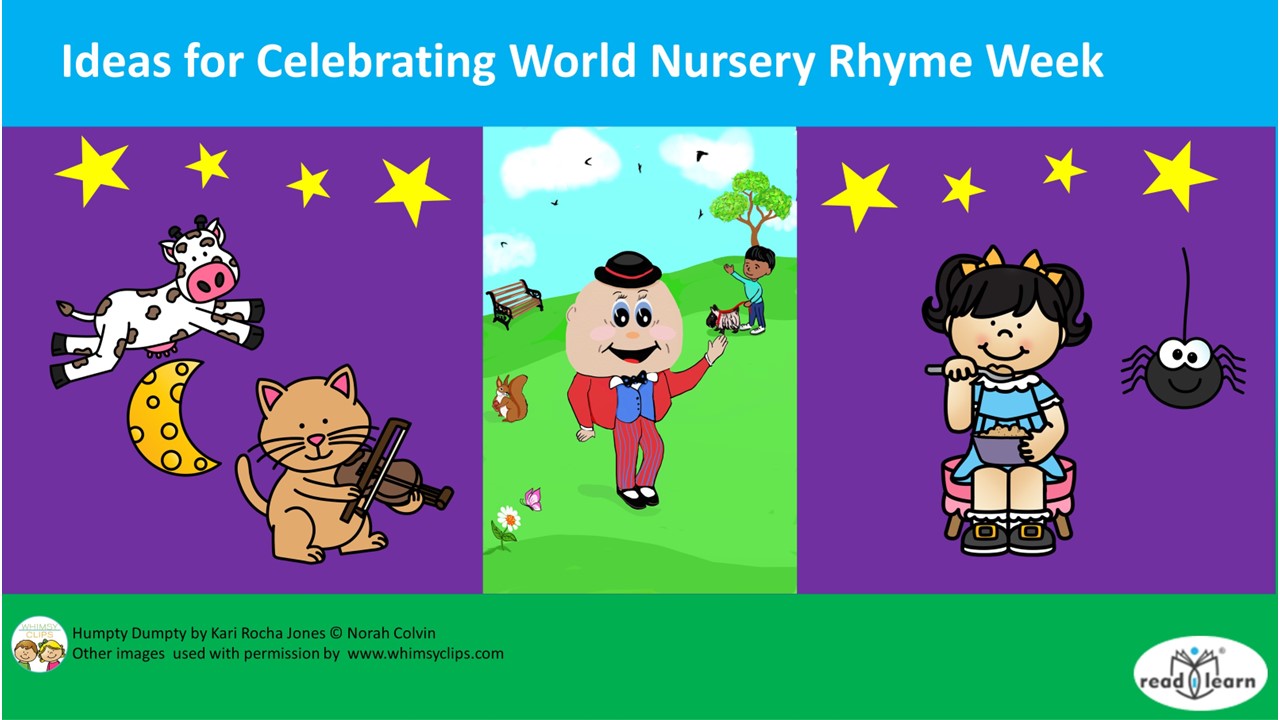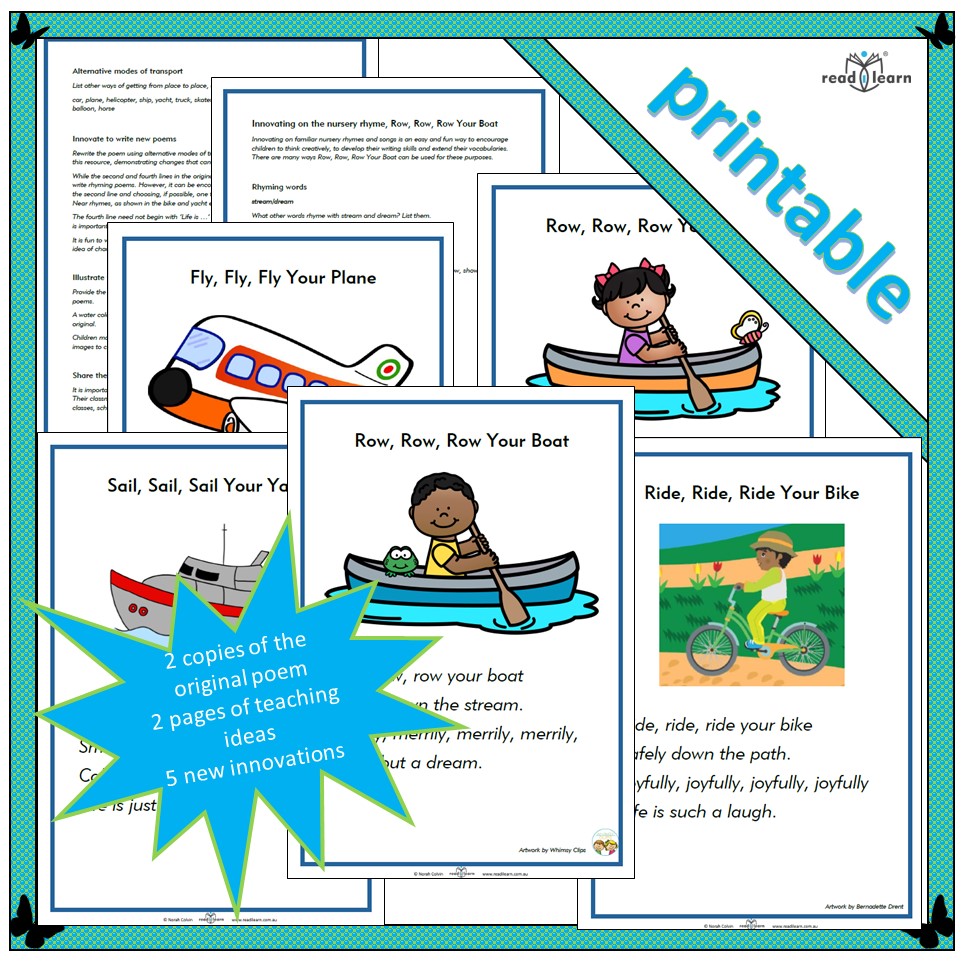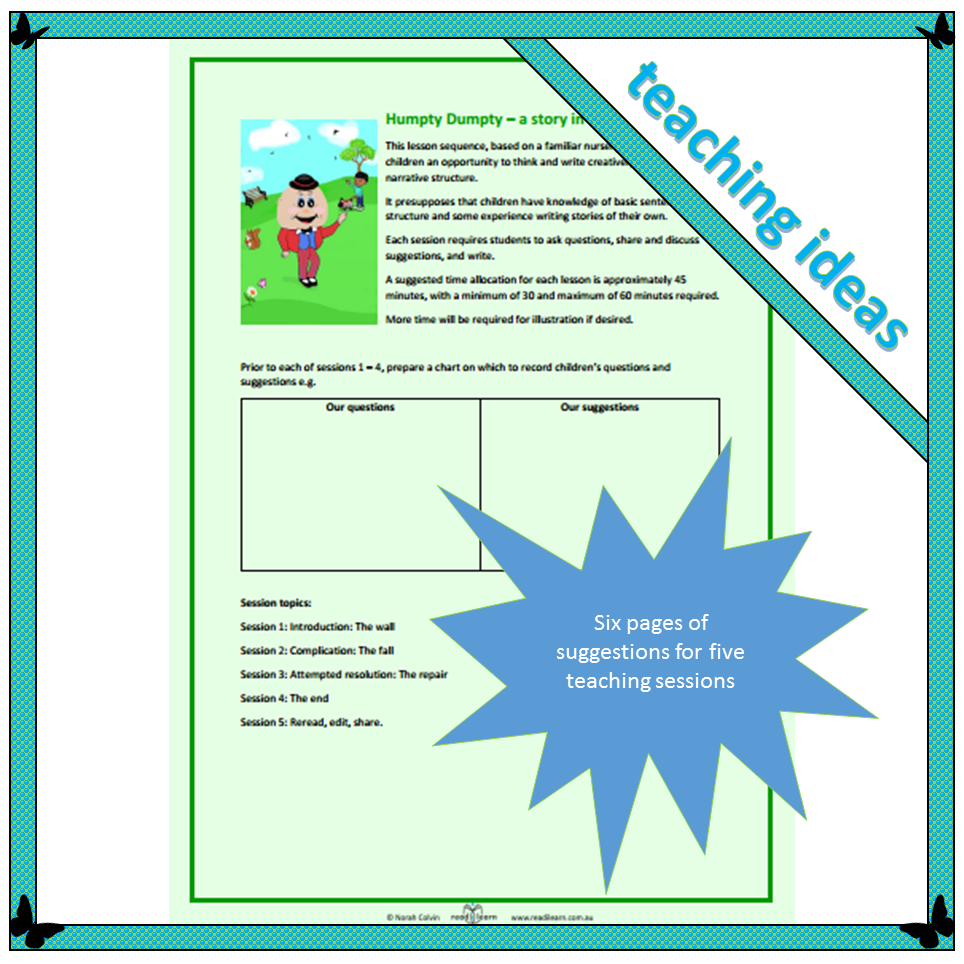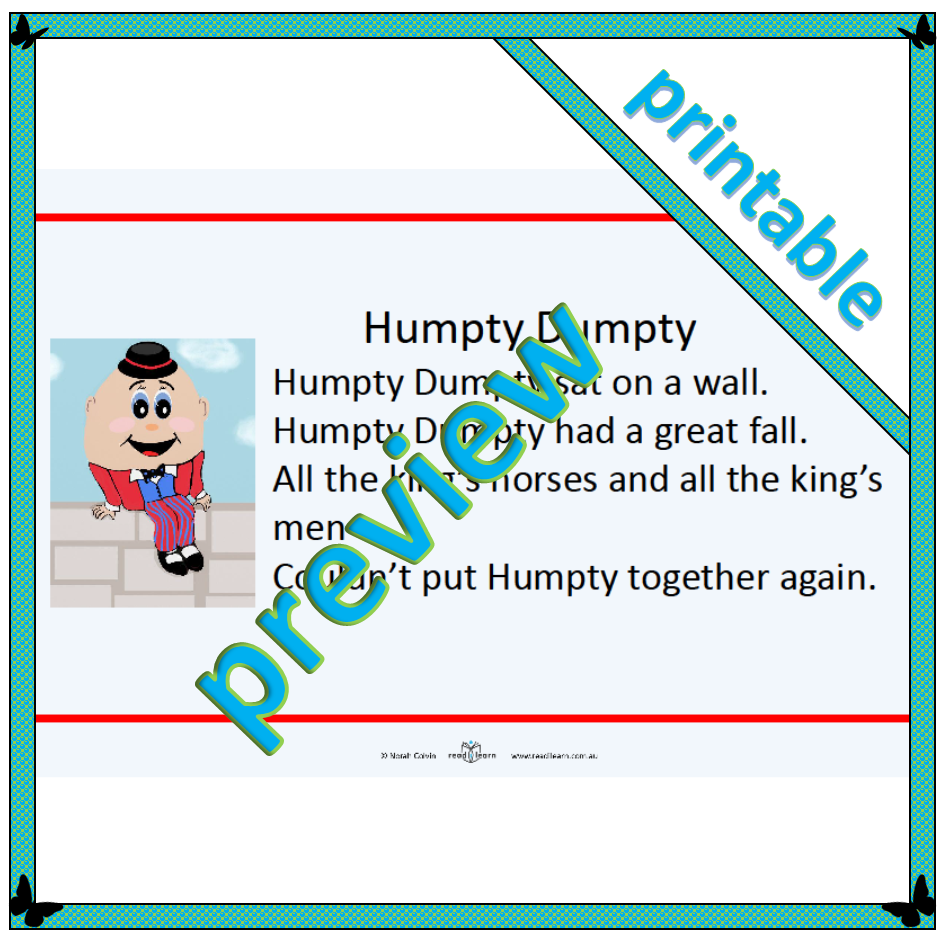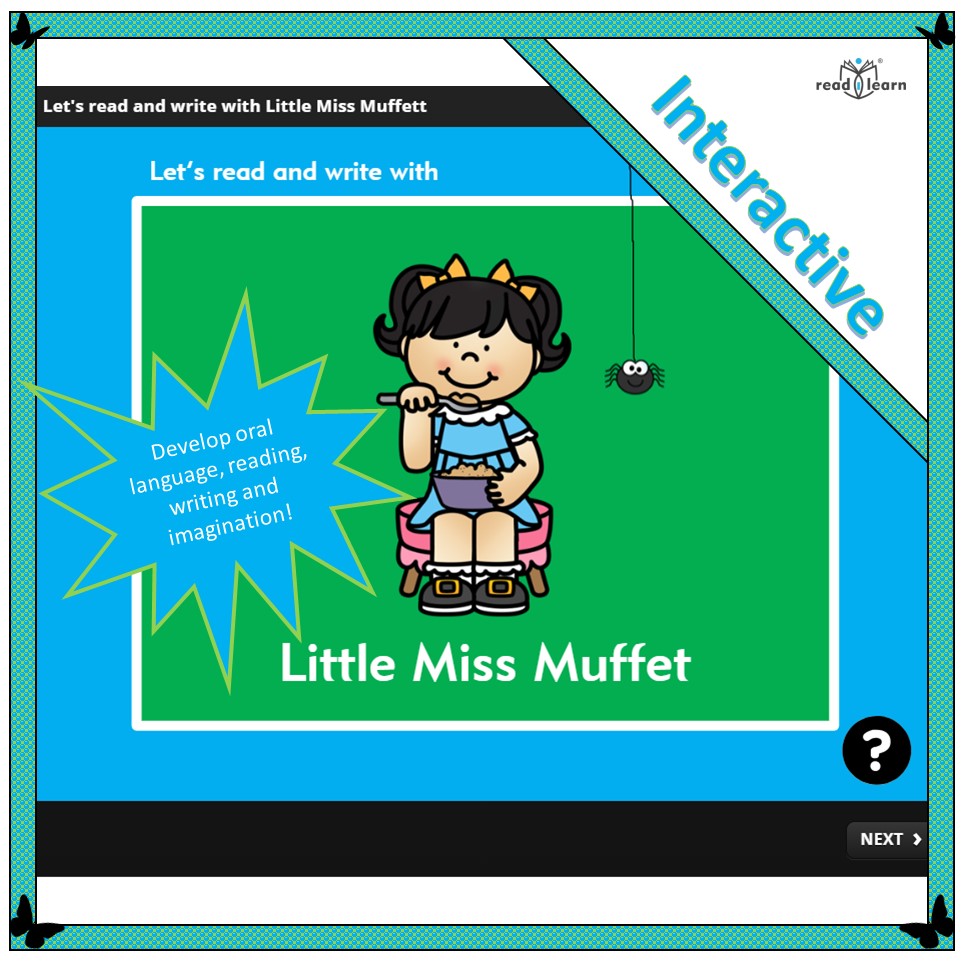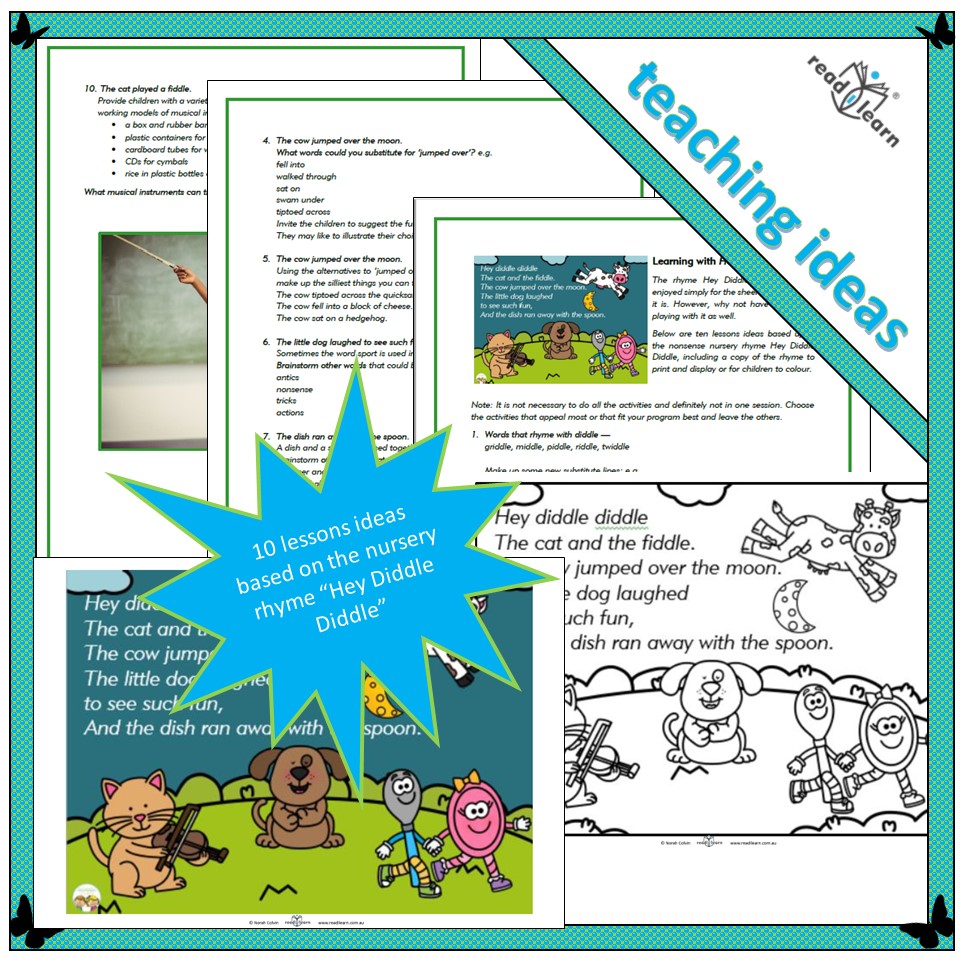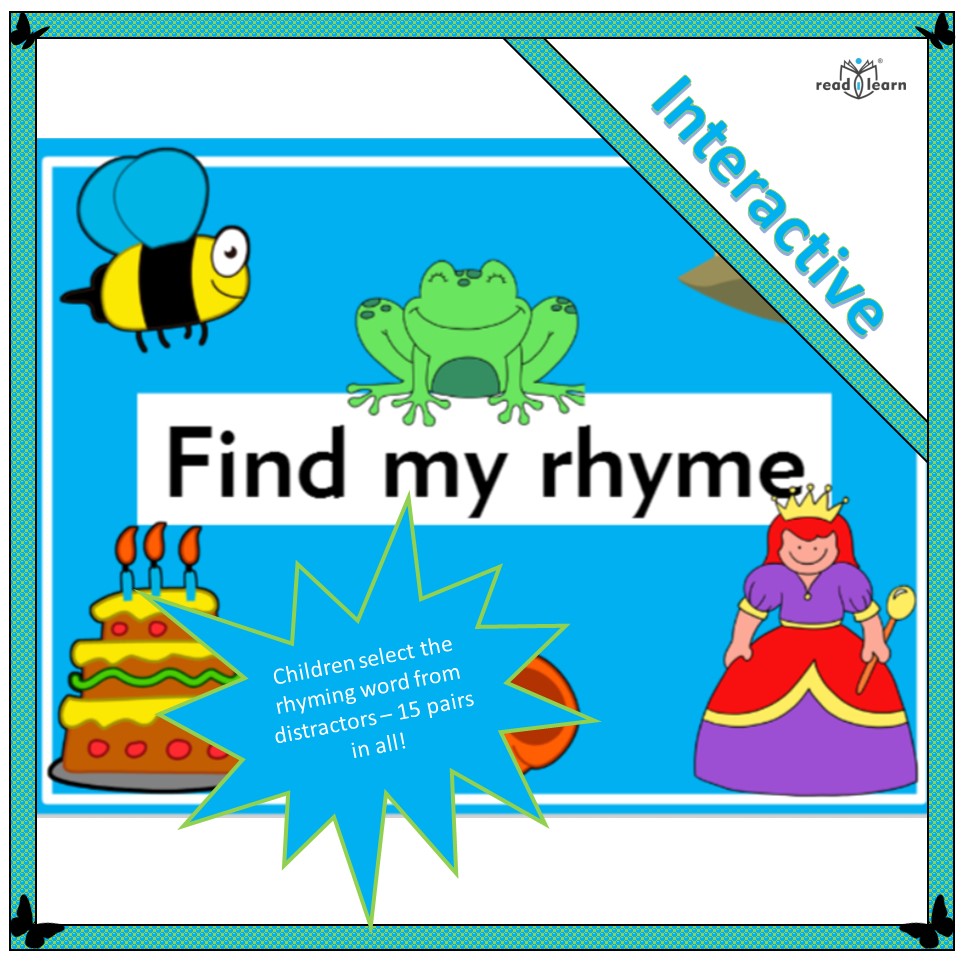Next week, from 13th – 17th November, is World Nursery Rhyme Week. Why not celebrate by revisiting some of the children’s (and your) favourite nursey rhymes. Children in our F – 2 classrooms can explore language features and use them as a springboard for writing, recitation, and role play. Children in older classrooms may like to investigate their (often dark) origins and history.
The aim of World Nursery Rhyme Week is to promote the importance of nursery rhymes in early education. The five official nursery rhymes for this year’s celebration are:
- Jack & Jill
- Hickory Dickory Dock
- Head, Shoulders, Knees & Toes
- Row Row Row Your Boat
- Wheels On The Bus.
However, you are welcome to use any nursery rhymes you like, and here at readilearn we have some resources to assist you, including resources for Row Row Row Your Boat. How cool is that?
readilearn nursery rhyme resources
Row, Row, Row Your Boat
Row, Row, Row Your Boat — the Nursery Rhyme includes 2 copies of the original rhyme, 2 pages of teaching suggestions and 5 new innovations on the rhyme. It can be used to help develop children’s language, creativity and writing skills when they use the familiar structure to create new poems of their own.
Humpty Dumpty
Teach literacy skills and develop creative thinking and imagination with Humpty Dumpty.
The Humpty Dumpty suite of resources includes:
The Accident — Humpty Dumpty’s Fall is an original story that innovates on the nursery rhyme by providing a scenario that might lead to Humpty’s falling from the wall. It is a digital estory which can be displayed and read on the interactive whiteboard. It can be read as a story on its own or as part of the writing unit Humpty Dumpty — a story in five sittings. (Note: if you wish to implement the writing unit, do so before reading the story.)
Humpty Dumpty — a story in five sittings is a series of five lessons in writing based upon the nursery rhyme. Each lesson provides opportunities for children to think creatively and imaginatively and to write using a basic narrative structure. It presupposes children already have an idea of sentence structure and some experience writing stories of their own.
Of course, before attempting to read or write an alternative, it is important that children are familiar with the nursery rhyme. We have that covered too, with a printable copy of the nursery rhyme Humpty Dumpty to download.
The lovely illustrations used in these Humpty Dumpty resources were done exclusively for readilearn by Kari Rocha Jones.
Little Miss Muffet
Let’s read and write with Little Miss Muffet is a series of lessons developing oral language, reading, writing and imagination, ready to teach on the interactive whiteboard. The lessons encourage children to contribute ideas to discussions that may lead to writing. Writing can occur at almost any point throughout the lessons and may involve modelled writing by the teacher, collaborative writing or independent writing.
Teacher notes included in the resource suggest ideas for discussing the nursery rhymes, considering different points of view (e.g. the spider’s) and alternate characters and events. Children are encouraged to write their own stories based on the rhyme and are presented with two other nursery rhymes with a similar structure to Little Miss Muffet — Little Jack Horner and an innovation called Lazy Mr Jellybean. A glossary of terms such as tuffet and curds and whey is also included.
Hey Diddle Diddle
Learning with Hey Diddle Diddle
The rhyme Hey Diddle Diddle can be enjoyed simply for the sheer nonsense that it is. However, it also provides many opportunities for learning as well.
Suggestions in the resource include:
- Rhyming
- Composing and substituting new lines
- Discussing the meaning of and investigating other ways of expressing the phrase ‘over the moon’
- Suggesting reasons for the cow’s excitement and other ways she could her excitement
- Brainstorming other items that go together, like the dish and the spoon
- Discussing musical instruments children play
- Role play playing musical instruments
- Making musical instruments from recycled materials
Find My Rhyme
While not a nursery rhyme as such, Find My Rhyme can be used to develop children’s ability with rhyming, and as a stimulus to write sentences, stories and poems with rhyme. It is an interactive resource ready for use on the interactive whiteboard.
Compare nursery rhymes to develop discussion and thinking
In the guest post Thinking Tools — facilitating deeper discussion in the Early Years, Gerard Alford, Director of itc Publications and thinkdrive, explains how to facilitate deep analytical discussion and quality comparisons using the Double Bubble Map thinking tool in combination with the cooperative learning strategy THINK: PAIR: SHARE to compare the nursery rhymes Humpty Dumpty and Little Miss Muffet.
Visit the World Nursery Rhyme Week website to find lots of free resources and to join in the worldwide celebration of nursery rhymes.
